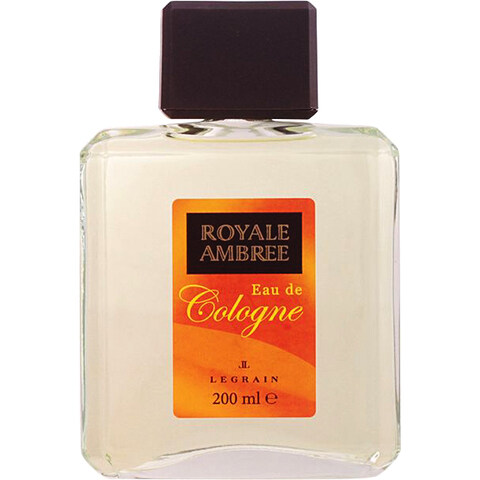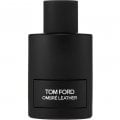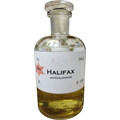27
Top Review
Translated
Show original
Colonial Goods XXV - From Bucharest to Barcelona. Olfactory excavations
In my commentary on 'Perla' by Miraj, a women's fragrance from communist Romania, I mentioned that the socialist state-owned company Miraj was originally founded in 1952 under the name 'Macul Roșu' (Red Poppy) and within a short time launched an enormous portfolio of fragrances on the market. It remained unclear, I noted at the time, where the personnel and know-how for this brilliant start came from, especially since there was probably no distinct perfume industry in Romania before the war, but only a rather small-scale manufacture of colognes.
Without knowing it, our friend and copper tester MonsieurTest solved the mystery by recommending that I try the fragrance reviewed here - and immediately supplied me with an English internet source on the Legrain company, as the basis for the historical research he had hoped for (and hereby provided): https://cleopatrasboudoir.blogspot.com/2014/02/legrain-perfumes.html?m=1
Thereby I noticed that it was indeed an English website, obviously designed by someone fluent in this language, but that the English of this article as well as some proper name information is incorrect. My intuition, trained by professional investigative work, told me that it must be a translation of a foreign language text into English by means of a translation machine. This was confirmed by further research. The article actually originally appeared in Romanian in the tabloid 'Evenimentul Zilei' (Daily Event) in 2007: https://evz.ro/milionarul-roman-din-barcelona-451486.html
The English and Romanian texts differ slightly: the operator of the English blog may have intervened editorially, and the original Romanian text may have been altered during electronic archiving. However, the following sequence of events emerges as reasonably certain:
Originally the perfume production in Romania was covered by import. When the Balkan wars of 1912/1913 brought logistics to a standstill, the idea of production in the country came to mind. The Jewish Bucharest native Simion Moscovici, who as an accountant in a drugstore had insights into the fragrance business, therefore founded the soap, cosmetics and cologne factory 'Legrain' in 1915 with his friend and financier Isaac, a pants cutter. The (fancy) name, inspired by a Bucharest tram station, was meant to sound French for the sake of a better image. The business was successful and the cologne 'Royale Ambree', which according to some sources was launched as early as 1915, according to others as late as 1940, is said to have been the market leader in Romania.
Although the Kingdom of Romania, allied with Hitler, protected its Jewish population (in its heartland, not in the annexed territories) from deportation to the death camps, the situation for the discriminated and largely lawless Jews became increasingly untenable, so Moscovici sold the factory to a German group. After the turmoil of war and nationalization, this very factory became the People's Owned Enterprise 'Macul Roșu' in 1952, later Miraj.
Simion Moscovici emigrated in January 1943 with his two sons - one of whom was the junior manager of the company, Henry Moscovici. The plan was to emigrate to Brazil. Due to an odyssey reminiscent of the film Casablanca in the context of expired transit visas, the family finally got stuck in Spain after crossing France at high risk. There she had connections to the representative office of the Swiss fragrance company Givaudan, who helped her to rebuild the Legrain company in Spain. As early as July 1943, Enrique Legrain, as Henry Moscovici now called himself, after his own brand of fragrance, relaunched 'Royale Ambree' in Spain, and there too this cologne became the market leader and the new-old brand a success in general.
Legrain remained independent until 1985 (production was then 3 million litres of colognes a year) and was then sold by Enrique Legrain to the conglomerate AKZO for what must have been a triple-digit million sum, today Legrain is a brand of the Unilever group. In any case, Henry/Enrique was still alive until 2007, when he gave the interview in question to the Romanian newspaper Evenimentul Zilei.
The 240 ml plastic spray bottle I ordered this year from "Supershop" via the Internet (another source of supply is the Spanish provider "perfumesclub") was manufactured by the Spanish company Inquiba S.A., but also bears the Unilever logo.
The fragrance was a little disappointing for me. An initial half-blind test revealed an almost 90% match to the classic 4711, possibly shifted very slightly into the orangy-soft. A richer, smackier and less metallic-harsh 4711, so to speak. This fits with the fragrance note: except for the swap of neroli for petitgrain (that's always a likeable castling in colognes), it's the same distinctive aromas as the classic from Cologne. Upon intense re-tasting, I think I detect certain simultaneous musty and pungent dissonances in the triangle of lemon, lavender and orange, like an imprecisely adjusted painting. I feel this way about many simple colognes, but not the best ones (like the yellow Alvarez Gomez). Also the durability is similarly ephemeral as with the notorious alleged "Omawässerchen" (which I quite like).
However, I have to listen up because the fragrance has received good to excellent ratings and reviews of fellow perfumos, who are very familiar with Spanish fragrances, with fresh fragrances or (Yatagan) at all with all fragrances, very well. Acqua di Parma is also often mentioned as a reference, and a special Spanish or Mediterranean aura is invoked. I can only understand this to a limited extent, even if the fragrance is more radiant, deeper and more Spanish when retested. Whether this is due to the influence of the pre-reviewers or the more generous application remains to be seen. I would also like to not exclude that the fragrance is produced under license by different manufacturers in each case and I got a weaker variant off.
With this review ends the series Colonialwaren. In this series dedicated to the 'brown Colognes' har Royale Ambree made it only because of its name, because ambriert he actually does not smell. With a little good will, however, it seems orangy-schattig, and also this meaning nuance has the word field Ambra/Amber/Ombre/Ambre yes...
Without knowing it, our friend and copper tester MonsieurTest solved the mystery by recommending that I try the fragrance reviewed here - and immediately supplied me with an English internet source on the Legrain company, as the basis for the historical research he had hoped for (and hereby provided): https://cleopatrasboudoir.blogspot.com/2014/02/legrain-perfumes.html?m=1
Thereby I noticed that it was indeed an English website, obviously designed by someone fluent in this language, but that the English of this article as well as some proper name information is incorrect. My intuition, trained by professional investigative work, told me that it must be a translation of a foreign language text into English by means of a translation machine. This was confirmed by further research. The article actually originally appeared in Romanian in the tabloid 'Evenimentul Zilei' (Daily Event) in 2007: https://evz.ro/milionarul-roman-din-barcelona-451486.html
The English and Romanian texts differ slightly: the operator of the English blog may have intervened editorially, and the original Romanian text may have been altered during electronic archiving. However, the following sequence of events emerges as reasonably certain:
Originally the perfume production in Romania was covered by import. When the Balkan wars of 1912/1913 brought logistics to a standstill, the idea of production in the country came to mind. The Jewish Bucharest native Simion Moscovici, who as an accountant in a drugstore had insights into the fragrance business, therefore founded the soap, cosmetics and cologne factory 'Legrain' in 1915 with his friend and financier Isaac, a pants cutter. The (fancy) name, inspired by a Bucharest tram station, was meant to sound French for the sake of a better image. The business was successful and the cologne 'Royale Ambree', which according to some sources was launched as early as 1915, according to others as late as 1940, is said to have been the market leader in Romania.
Although the Kingdom of Romania, allied with Hitler, protected its Jewish population (in its heartland, not in the annexed territories) from deportation to the death camps, the situation for the discriminated and largely lawless Jews became increasingly untenable, so Moscovici sold the factory to a German group. After the turmoil of war and nationalization, this very factory became the People's Owned Enterprise 'Macul Roșu' in 1952, later Miraj.
Simion Moscovici emigrated in January 1943 with his two sons - one of whom was the junior manager of the company, Henry Moscovici. The plan was to emigrate to Brazil. Due to an odyssey reminiscent of the film Casablanca in the context of expired transit visas, the family finally got stuck in Spain after crossing France at high risk. There she had connections to the representative office of the Swiss fragrance company Givaudan, who helped her to rebuild the Legrain company in Spain. As early as July 1943, Enrique Legrain, as Henry Moscovici now called himself, after his own brand of fragrance, relaunched 'Royale Ambree' in Spain, and there too this cologne became the market leader and the new-old brand a success in general.
Legrain remained independent until 1985 (production was then 3 million litres of colognes a year) and was then sold by Enrique Legrain to the conglomerate AKZO for what must have been a triple-digit million sum, today Legrain is a brand of the Unilever group. In any case, Henry/Enrique was still alive until 2007, when he gave the interview in question to the Romanian newspaper Evenimentul Zilei.
The 240 ml plastic spray bottle I ordered this year from "Supershop" via the Internet (another source of supply is the Spanish provider "perfumesclub") was manufactured by the Spanish company Inquiba S.A., but also bears the Unilever logo.
The fragrance was a little disappointing for me. An initial half-blind test revealed an almost 90% match to the classic 4711, possibly shifted very slightly into the orangy-soft. A richer, smackier and less metallic-harsh 4711, so to speak. This fits with the fragrance note: except for the swap of neroli for petitgrain (that's always a likeable castling in colognes), it's the same distinctive aromas as the classic from Cologne. Upon intense re-tasting, I think I detect certain simultaneous musty and pungent dissonances in the triangle of lemon, lavender and orange, like an imprecisely adjusted painting. I feel this way about many simple colognes, but not the best ones (like the yellow Alvarez Gomez). Also the durability is similarly ephemeral as with the notorious alleged "Omawässerchen" (which I quite like).
However, I have to listen up because the fragrance has received good to excellent ratings and reviews of fellow perfumos, who are very familiar with Spanish fragrances, with fresh fragrances or (Yatagan) at all with all fragrances, very well. Acqua di Parma is also often mentioned as a reference, and a special Spanish or Mediterranean aura is invoked. I can only understand this to a limited extent, even if the fragrance is more radiant, deeper and more Spanish when retested. Whether this is due to the influence of the pre-reviewers or the more generous application remains to be seen. I would also like to not exclude that the fragrance is produced under license by different manufacturers in each case and I got a weaker variant off.
With this review ends the series Colonialwaren. In this series dedicated to the 'brown Colognes' har Royale Ambree made it only because of its name, because ambriert he actually does not smell. With a little good will, however, it seems orangy-schattig, and also this meaning nuance has the word field Ambra/Amber/Ombre/Ambre yes...
19 Comments
Latest Reviews
 FvSpee 3 months ago
FvSpee 3 months ago
Could have, would have, Ferrari chain
As my loyal old readers know, leather fragrances are not my specialty. But now that Ford's OL has fallen under my nose, here are my 2 cents on the subject.
OL comes across as an only slightly innovative, very mainstream fructo-synthetic...
Translated
 FvSpee 3 months ago
FvSpee 3 months ago
Lehmann's Florida Boys
It should be obvious that this fragrance is not named after Vicsount Halifax, Viceroy of India, advocate of the appeasement policy towards Hitler and Churchill's ambassador in Washington. But I'd bet all my Canada souvenirs, including the moose...
Translated




